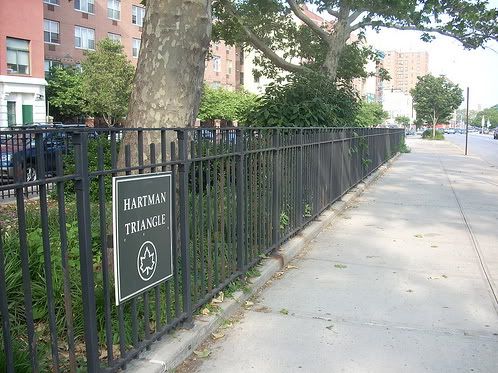The Gustave Hartman Triangle
 From the nycparks
From the nycparks This plot of land is located at Second Street and Avenue C. In 1969, Gustave Hartman Triangle was transferred from the Board of Estimate to Parks for permanent use as parkland. The triangular mall is lined with London plane trees, a species known for its ability to survive in harsh urban environments, including dry soil and polluted air. A hybrid of the American sycamore and the Oriental plane tree, the London plane tree resembles the American sycamore, but its fruit clusters are borne in pairs rather than singly. The tree takes its name from London, England, where London plane trees have flourished despite the city’s coal-polluted air. New York City’s early park designers, who planted many of Manhattan’s most formal parks, considered London planes highly elegant trees. Due to the trees’ enduring popularity, Parks uses the silhouette of a London plane leaf as its official insignia. Once populated by, Native Americans, Dutch settlers and free black farmers, this Lower East Side neighborhood was in Hartman’s time a largely Jewish enclave. It was home to a flourishing Yiddish theatrical and artistic community, radical intellectuals, and tens of thousands of immigrant families. After World War II, the Lower East Side’s ethnic makeup shifted as the neighborhood became one of the first racially integrated communities in the city. In recent years, the neighborhood’s legendary color and vitality have attracted residents of all nationalities and walks of life.
 From the nycparks
From the nycparks 

























1 comment:
My grandfather Gustave Hartman was a true altruist. I would love to greenlight a movie about his life. Ted Hartman
Post a Comment